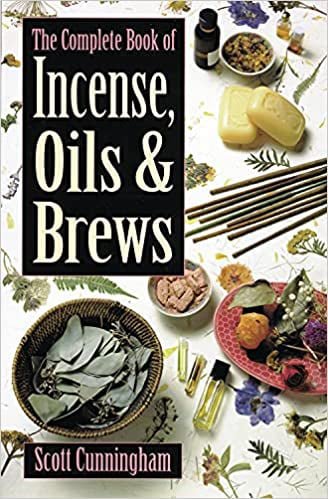One of the secrets of real magic is that it is controlled by the mind. The more things in your ritual to help your mind associate with your goal, the more powerful your ritual may be. Colored candles, scented oils, natural incenses, and more all add to the impact of the magic you wish to do. But how do you know which incense to burn? Is it possible to add scented oils together to get a more powerful oil? And how do you make your own appropriately-scented tools?
The Complete Book of Incense, Oils and Brews (Llewellyn's Practical Magick) by Scott Cunningham.
Often Bought With This Item:
* Cunningham's Encyclopedia of Magical Herbs (Llewellyn's Sourcebook Series) (Cunningham's Encyclopedia Series, 1) by Scott Cunningham.
* Cunningham's Encyclopedia of Crystal, Gem & Metal Magic (Cunningham's Encyclopedia Series, 2) by Scott Cunningham.
Related:
* Llewellyn's Complete Formulary of Magical Oils: Over 1200 Recipes, Potions & Tinctures for Everyday Use by Celeste Rayne Heldstab.
* The Native American Herbalist’s Bible 3-in-1 Companion to Herbal Medicine: Theory and practice, field book, and herbal remedies. Everything you need to know from the fields to your apothecary table by Linda Osceola Naranjo.

